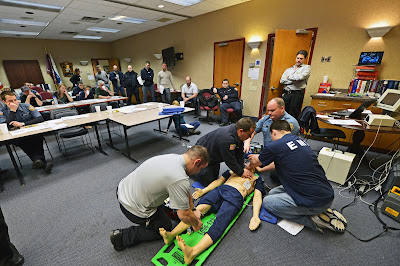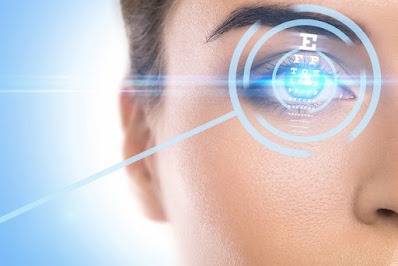CPR, or cardiopulmonary resuscitation, is an important medical procedure that almost anyone can learn. With a combination of chest compressions and rescue breaths, a bystander can effectively stabilize a cardiac arrest victim until medical help arrives on the scene. And now, with the popularity of online CPR certification, it’s easier, faster, and more affordable than ever to earn this important (and potentially life-saving) type of certification.
But before you enter a CPR certification class, you’re bound to have quite a few questions. One of the most common: how long does my CPR certification last? To ensure that your information is current and your skills are fresh, most if not all medical certifications come with an expiration date to ensure you keep learning and improving. Here, we’re taking a closer look at CPR certification, why you need it, and how long this type of certification will last.
What is CPR?
CPR is a medical procedure used primarily to assist victims of cardiac arrest. However, CPR can also be effective whenever the victim’s heart has stopped or they are unable to breathe. This may result from electrocution, poisoning, smoke inhalation, a near-drowning event, or choking. CPR combines chest compressions and rescue breaths to keep the victim stable until professional medical help reaches the scene.
But how does this work? Essentially, CPR works to mimic the functioning of the heart. Chest compressions help the heart pump blood, oxygen, and nutrients throughout the body. It’s essential for nutrient-rich blood to continually reach your vital organs. In fact, if the brain is deprived of oxygen for even just a few minutes, permanent brain damage or death can occur. This is why performing CPR immediately is so critical.
Additionally, rescue breaths provide oxygen directly to the lungs. While important, some advocates now claim that rescue breaths aren’t entirely needed for effective CPR. According to some studies, hands-only CPR, where the CPR provider only performs chest compressions, can be just as effective as regular CPR. It may also increase bystander participation rate, as some people are hesitant to provide this type of mouth-to-mouth contact.
Why Do You Need CPR Certification?
At first glance, CPR may seem like a relatively straightforward procedure. While CPR can be easy to learn, this doesn’t mean you should simply settle for a few YouTube videos or online articles to learn this important skill. Just think: when someone’s life is in your hands, do you want to leave your training up to chance?
This is why we have CPR certification. Enrolling in a CPR certification course ensures that you receive the best education and training from certified instructors. Not only do they have the best materials and training methods at their disposal, but they also understand the most effective ways to impart this information. CPR instructors understand how to make these lessons stick for their students, meaning you’ll retain more information and be able to quickly and effectively pass your test to become CPR certified.
Believe it or not, but CPR has changed quite a bit over the years. Earlier methods of resuscitation involved being dragged from a horse, having bellows blow hot air into the victim’s mouth, or massaging the actual heart itself. With advancements in medical knowledge, we now have a much more effective and safe version of resuscitation—our modern CPR. With CPR certification classes, you’ll receive the best training possible.
How Long Does CPR Certification Last?
Nothing good lasts forever and the same goes with CPR certification. Whether you receive your online CPR certification or opt in for the traditional, in-person model, your CPR certification is valid for two years. While this may seem like a short amount of time, this limit also ensures that students are receiving the best, most current information. By recertifying every two years, it also helps to keep your skills sharp. Just because you learned CPR once doesn’t mean you necessarily have the opportunity to use this skill in real life. By returning for an online CPR recertification course, you’ll stay fresh and effective at performing this procedure.
Luckily, earning your online CPR recertification is just as simple (if not more so) than earning your CPR certification the first time around. In most cases, you can use the same online CPR training program to earn your CPR recertification. Just like earning your certification, all you have to do is select your course and pass the final test. From there, you can instantly print off your proof of certification and you’re officially CPR certified for another two years.
Earning Your Online CPR Certification
These days, more and more students are turning to 100 percent online classes when they want to learn CPR. Compared to traditional, in-person classes, there are quite a few distinct benefits to learning this important skill online. With the rapid advancements of digital technologies and platforms, we can do almost anything with a Wi-Fi connection these days. So, why not learn CPR online, too?
Online CPR training is fast, convenient, and often more cost-effective. These classes are designed to fit your busy schedule and you can start and stop your lessons at any time. Accessible from any internet device, whether it’s a tablet, laptop, or smartphone, you can learn CPR from almost anywhere with professional, guided instruction.
Conclusion – How Long Does Online CPR Certification Last?
Every year, hundreds of thousands of lives are lost to cardiac arrest. Since so many cardiac arrest episodes occur far from a hospital, it’s critical to train as many bystanders as possible in performing CPR. When CPR is performed immediately on a cardiac arrest victim, studies show that their survival rate increases dramatically.
Even if you’re not involved in the medical community, you should become CPR certified. Learning CPR and becoming CPR certified will help to make your home, workplace, and community a safer space. In the event of a medical emergency, you may even make the difference that could save a life. CPR training and certification provides you with the skills, confidence, and knowledge to make this difference.
This is a guest blog entry.






















